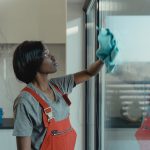
Throughout history, architecture has served as a symbol of society, representing the ideals, triumphs, and final demise of civilizations. From colossal monuments to dwellings and buildings that make up a city’s fabric, we may learn a lot about the people who lived there long before our time. We are learning about the effects of architecture on people in whole new ways by examining the built environment of the past in conjunction with modern-day studies on psychology and the environment, which begs the question: How does architecture influence society? In addition to architecture, interior design is also an important part of a building. Check out Surrey interior designer if you live in the area and need help with interior design.
Architecture’s Importance
Architecture exists at its core to create a physical environment that allows people the opportunity to live; however, it is also important to understand that architecture is more than simply the constructed environment; it is also a component of our culture. It represents the opportunity to allow us to see ourselves in addition to how we perceive the environment.
We tend to understand the basic functions of shelter, the basic architecture of a structure was deemed through the environment of the specific place, the materials that were easily accessible, and the values of the civilization that built them. The designs developed as the globe got more linked, but even in a modern building, there is still an emphasis on recognizing cultural subtleties in the built environment.
There is also a knowledge that architecture is a discipline in and of itself, and one could argue that it is equally necessary for architects to continue pushing the frontiers of construction in new ways, for the sake of the craft.
More Than Just a Structure
Architecture in its basic nature will have a large influence on society but is also able to impact humans on a much more basic nature. Everything from the arrangement of the space to the specific materials that are used in the structure may have an impact on the mood, health, and productivity levels of the occupants. People whose work areas have been designed in a good manner are generally much more focused and productive and tend to take off less for sick days.
Stress levels tend to increase in buildings that are sterile and unoriginal structures of concrete. More and more cities and buildings are being designed in an effort to fight this, whether via gorgeous architecture or thoughtful a connection to nature, which helps to make individuals feel more calm and engaged.
Well-designed architecture and the emotional connection people have to it are not easily quantifiable. However, we have all had the sensation of entering into a setting that just seems right. We understand that the building has a specific use but there is a deeper connection to the area, it somehow manages to speak to you and bring about a connection that is much more emotional, since they both speak to the feeling of experiencing architecture. It’s an academic comprehension, as well as an emotional bond between a user and the area itself.
The Role of the Architect
Architecture is both an art and a science, relying on and intertwining economics, sociology, politics, and other disciplines. Before plans and blueprints are ever drawn up, HMC Architects spends a significant amount of time getting to know the client, the neighborhood, and the area in which the project will be located. A project that is considered to be successful is one that recognizes that the specific locations and structures we love most help to evoke sentiments in us that is difficult to define but are formed by the process of gathering and applying all of this information and study.
Technology features a large influence on architectural practice and its impact on society. Our unprecedented access to global data, research findings, and the capacity to connect instantly with anybody, anywhere in the globe, has transformed the profession. As you can see, architecture is an essential aspect of our daily lives and us as a people. It will continue to remain an essential part of the human condition.
We have a deep desire to learn from our past, both of our own attempts and those successful projects of a comparable nature completed by others.




